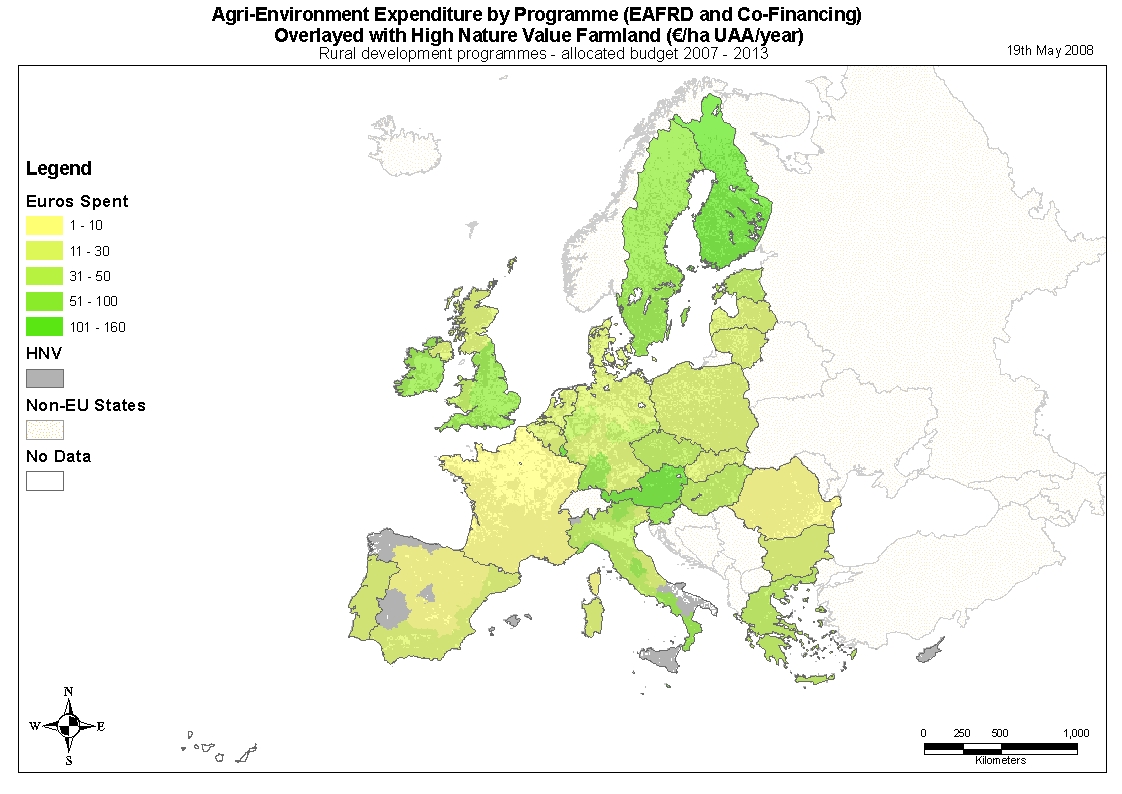In order to animate a transparent debate on the purpose, intensity and spatial distribution of CAP expenditure, a number of maps overlaying CAP expenditure data and high nature value farmland have been produced as part of a study recently completed by IEEP for the UK Royal Society for the Protection of Birds (RSPB).
High Nature Value (HNV) farmland is generally associated with low intensity land use and high levels of biodiversity, and helps to show where some form of EU-level policy intervention is needed in order to provide environmental goods that might otherwise be inadequately provided. Along with some knowledge of the aims and objectives of different CAP measures, overlaying a map of HNV farmland (we have used the latest map from the European Environment Agency and the Joint Research Centre) with CAP expenditure data helps to demonstrate the extent to which public expenditure provides impacts that are beneficial to society, in this case rich biodiversity. One example of the maps prepared, showing annual average expenditure on the agri-environment measure (this is the EU’s flagship measure for the environment) over the 2007-2013 funding period is shown below (click to enlarge).

The map shows rather different levels of expenditure in different parts of Europe, and even within some Member States. The uneveness in the intensity of expenditure is not concurrent with the presence of HNV farmland. For example, the rate of expenditure for six Spanish regions, France and Romania falls below €10/ha of utilised agricultural area per year, all countries estimated to have a large area of HNV farmland. Whilst this partly reflects the different ways in which the measure is applied, as shown in five case studies prepared for the study, it also raises questions about the commitment of some Member States to supporting areas of high biodiversity value.
Studying the relationship between CAP expenditure and its environmental impacts in a spatial way helps to underpin an analysis, within the context of the ongoing EU Budget Review, of the future rationale for, structure of and funding needs of European agriculture policy post-2013. This study has taken an important first step, and further work is needed to relate up-to-date CAP expenditure data to information on the condition and location of the biodiversity resource; this kind of data, somewhat surprisingly, is lacking at the present time.
Further maps, analysis and a consideration of the implications for the current policy debate are available in the full report, now available from the IEEP website.

Europe's common agricultural policy is broken – let's fix it!
